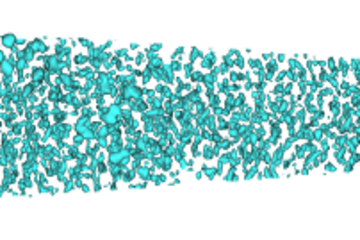All genres
61.
Talk
Recent progress in dealloying studies of Cu3Au(111). ECS 217th Meeting, Vancouver, Canada (2010)
62.
Talk
Effect of Additives on the Selective Dissolution of a Cu3Au Model Alloy. 216th ECS Meeting, Vienna, Austria (2009)
63.
Talk
Initial steps of dealloying. EUROCORR 2009, Nizza, France (2009)
64.
Talk
Initial Steps of Dealloying. EUROCORR 2009, Nice, France (2009)
65.
Talk
Corrosion behaviour of Fe–Al(–X) alloys in steam. 5th Discussion Meeting on the Development of Innovative Iron Aluminium Alloys (FEAL 2009), Prague, Czech Republic (2009)
66.
Poster
Grain boundary chemistry in nickel alloys applied in 700°C coal-power plant. High Temperature Corrosion - Gordon Research Seminar , New London, NH, USA (2013)
67.
Poster
Grain boundary chemistry in nickel alloys applied in 700°C coal-power plant. High Temperature Corrosion - Gordon Research Conference, New London, NH, USA (2013)
68.
Poster
Insertion and Extraction Mechanisms of Li in Al Model Electrodes Studied by in-situ XRD. 223th ECS Meeting, A1 - General Student Poster Session, Toronto, Canada (2013)
69.
Poster
Grain boundary chemistry in nickel alloys applied in 700°C coal-power plant. DPG-Frühjahrstagung 2013, Regensburg, Germany (2013)
70.
Poster
Grain boundary chemistry in nickel alloys applied in 700°C coal-power plant. DPG-Frühjahrstagung 2013 , Regensburg, Germany (2013)
71.
Poster
Grain boundary chemistry in nickel alloys applied in 700°C coal-power plant. High Temperature Corrosion - Gordon Research Seminar , New London, NH, USA (2013)
72.
Poster
Grain boundary chemistry in nickel alloys applied in 700°C coal-power plant. High Temperature Corrosion - Gordon Research Conference, New London, NH, USA (2013)
73.
Poster
Surface Morphology Changes during Dealloying. Pacific Rim Meetin on Electrochemical and Solid-State Science PRIME 2012 / ECS 222, Honolulu, HI, USA (2012)
74.
Poster
Analysis of electrochemically inserted lithium in metal electrodes. 220th ECS Meeting, A1 - General Student Poster Session, Boston, MA, USA (2011)
75.
Poster
Analysis of electrochemically inserted lithium in metal electrodes. International Summer School on Surfaces and Interfaces in Correlated Oxides, Vancouver, BC, Canada (2011)
76.
Poster
Analysis of electrochemically inserted lithium in metal electrodes. DPG Frühjahrstagung der Sektion AMOP (SAMOP) und der Sektion Kondensierte Materie (SKM), 75. Jahrestagung der DPG, Dresden, Germany (2011)
77.
Poster
Possibilities for high-temperature corrosion at MPIE. International Symposium on High-temperature Oxidation and Corrosion, Zushi, Japan (2010)
78.
Poster
Steam Corrosion Studies of Fe–Al Based Alloys. EUROCORR 2010, Moskau, Russland (2010)
79.
Poster
Novel setups pushing the limits of high-temperature reaction studies. Gordon Research Conference on High Temperature Corrosion, New London, NH, USA (2010)
80.
Poster
Phosphate crystallization on zinc and steel surfaces. 109th Annual meeting of the German Bunsen Society of Physical Chemistry (Bunsentagung), Bielefeld, Germany (2010)











